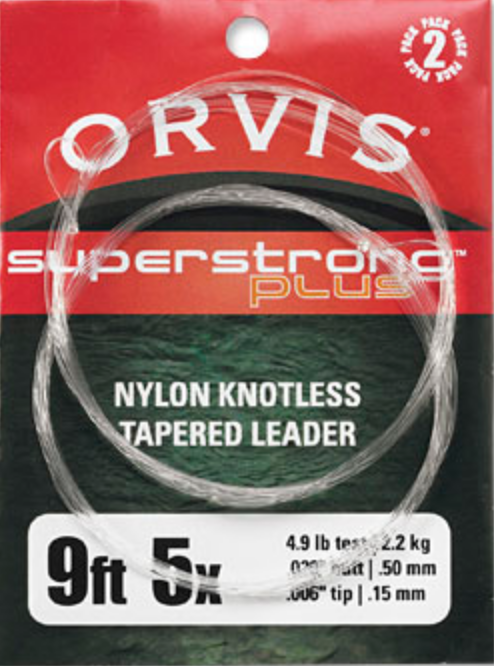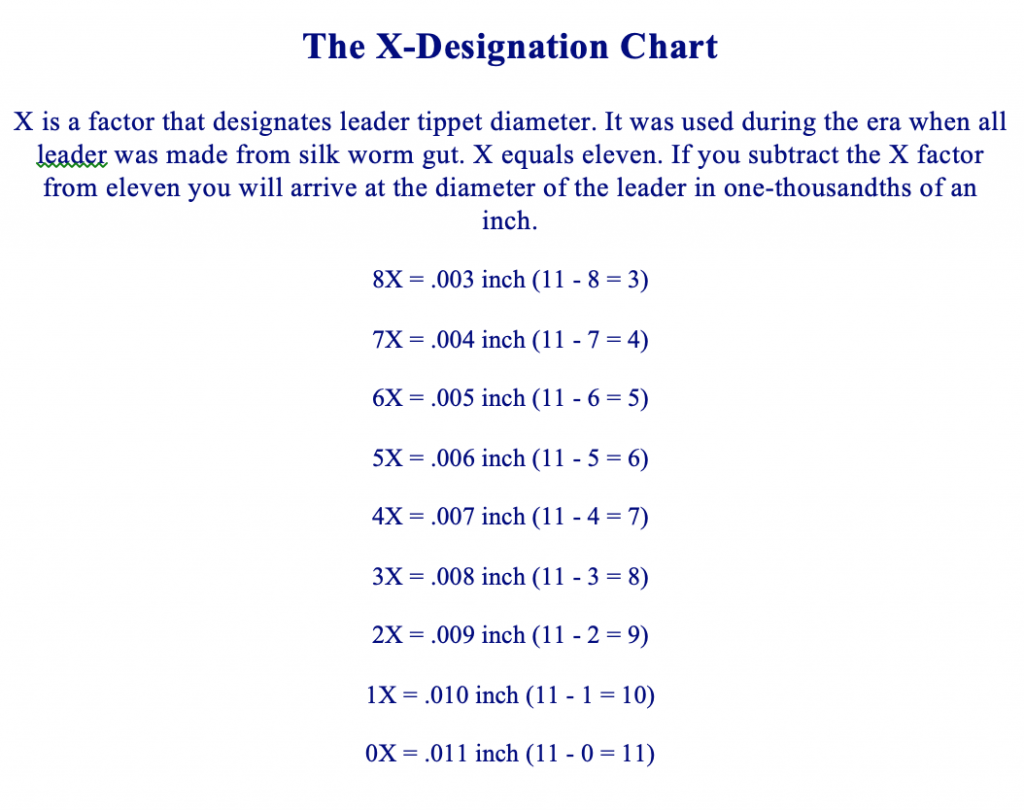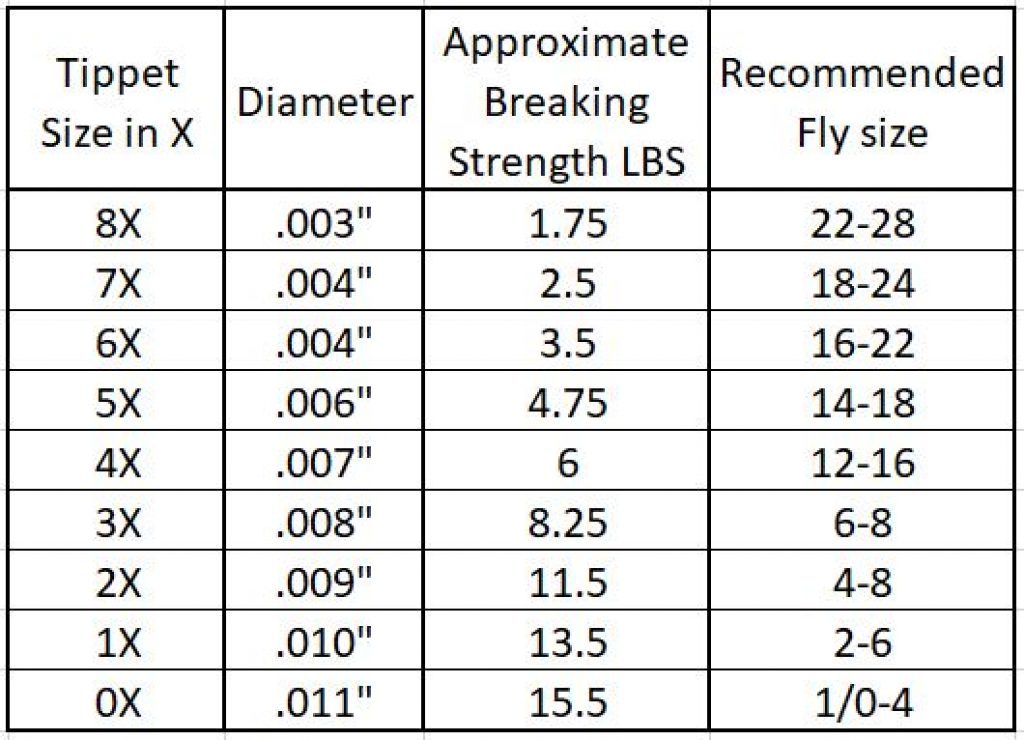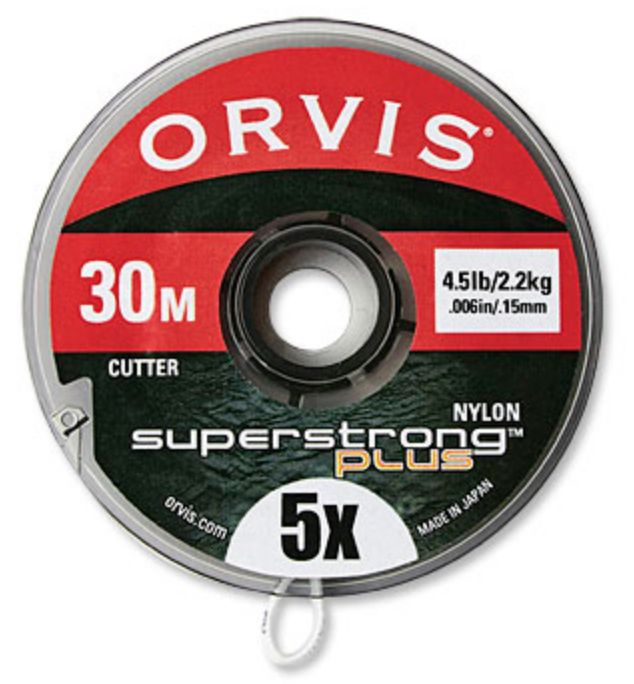
For beginners, the leader and tippet represent one of the most misunderstood, or unrealized, components of critical fly fishing gear. Many don’t understand the relationship between the tippet and leader or tippet and fly, while others simply don’t understand what the difference is between the leader and tippet. And while intermediate anglers may have a working knowledge of how the tippet relates to the fly, few take the time to contemplate how the right overall leader design can contribute to their success on the water.
To better understand leader design, let’s start from the beginning and define what the leader is. In simple terms, the leader is the monofilament connection between the heavier plastic fly line and the fly. While it varies in length, the leader typically measures between 7 1/2′ and 9’ and has two primary purposes: To allow for a less visible connection from fly to line and to transfer energy during the fly cast. It tapers from a thick butt section that attaches to the fly line, down to a very fine section that attaches to the fly. The finest section that attaches to the fly is referred to as the tippet.
So, the tippet is the piece attached to the fly and its appropriate size is determined by what size fly you’re fishing and how you’re fishing that fly. At least those are the primary reasons. Other factors such as water level, water speed, and clarity can also contribute to that decision. Smaller tippet sizes are not only less visible to the fish, they offer less resistance in the water, allowing for such benefits as less drag and/or faster sink rates. Of course, smaller tippets are not as strong, but when dead-drifting dry flies or nymphs, the fish is typically “sipping” the passing fly, not ambushing it, so it is not often an aggressive strike that will snap the line. Rather, you are lifting the rod and tightening the line somewhat smoothly, and then all of the shock absorbing properties of your rod come into play to, when used properly, help protect that fine tippet and keep it from breaking.
However, when fishing a streamer fly, you are usually stripping the fly to suggest the movement of a wounded or fleeing baitfish, crayfish, etc. This will most often provoke a more violent strike from the fish, and too light a tippet will often snap under such a jolt. Since you are imparting movement on these flies anyway and a dead drift is not desired, a heavier tippet will better move the fly and better withstand the more aggressive strike.

In essence, you want the tippet to balance with the fly for a more efficient cast and drift. For this reason, tippets are sized primarily by their diameter, but also have pound test ratings like spin fishermen may be more accustomed. Those details are all given in the fine print on a tippet spool or leader package but the most obvious marking is a single number followed by an “x” – 4x, 1x, 6x, etc.
It’s a strange system that can be confusing at first, but it relates directly to the diameter of the tippet, so 6x does not mean 6 pound test. Rather it all corresponds to the base measurement of 0x tippet, which is .011”. If I subtract the diameter of my tippet from this base of .011” I get the appropriate “x” designation and vice versa. In other words, if I have tippet that is .005”, 11 – 5 = 6, or 6x. On the other hand if I subtract the “x” number from .011”, it gives me the actual diameter. For 3x, 11 – 3 = 7, or .007”. I know. Wouldn’t you think there’d be a simpler system?
What you should notice is that the bigger the number, the smaller the tippet. So, 6x is smaller than 3x. Fly (hook) sizes work the same way. A size #18 fly is considerably smaller than a #4 fly. But if you know the size of your fly, there is a pretty simple formula to determine the perfect tippet size to match it. Take the size of the fly and divide by 3. As example, for a size #12 fly, the perfect tippet size is a 4x. Who knew there would be so much math in fly fishing?

It doesn’t need to be this scientific, but using this formula will give you a good baseline in determining a tippet size that will balance with your fly size. You can always fudge up and down as needed. Just keep in mind that when using the above formula, the more you stray to the small side of ideal, the more difficult it will be to turn the fly over with a cast and there’s a better chance of snapping the fly off. The more you stray to big the big side of ideal, the more visible your tippet will be and the more it will negatively impact natural drift.
Without trying to complicate matters too much, the length of the tippet will also impact things like how freely the fly drifts. For example, if you’re trying to dead-drift a size #14 dry fly, you will likely be able to better achieve a drag-free drift with a 5x tippet that is 20” long than with a 6x tippet that is 10” long. Conversely, if you are trying to impart movement on a streamer, a 4x tippet that is 10” long will provide much more control and immediate movement than a 3x tippet that is 20” long.
All of this is a piece to a bigger part which is the leader, and a lot of people don’t understand the difference in the two. Tippet is just a part of what makes up a leader just like tires are part of what makes up a car. If you merely tied 9’ of straight tippet to the fly line, you would certainly be able to execute good drifts but you would have an extremely difficult time casting the fly where you wanted to and would regularly experience the fly and tippet landing in a pile, just inches from the fly line.
Therefore, the leader is tapered and consists of three parts: The butt, the taper, and the tippet. We already know what the tippet does. The thicker butt section turns the leader over with the rest of the cast, which helps eliminate piling. The taper section essentially dampens the energy of the fly cast, allowing the fly and tippet to land softly on the water.
When you buy a tapered leader at a fly shop, it is usually knotless. They achieve the taper by running the nylon material through a machine. On the package, it will indicate the leader’s overall length and its tippet size. So it might indicate that it is a 9’ 5x leader. In fine print, you can also see the exact diameters of the butt and tippet as well as the pound test. It has tippet built in and is ready to go right out of the package. So what’s with the spools of tippet?

Tippet material can also be purchased on a spool with a number designation as described earlier – 3x, 4x, 5x, etc. This is purely straight tippet with no taper and its primary purpose is to rebuild or alter your leader. When you wear out the tires on your car, you can replace them without having to replace the entire car, and it’s the same with a leader and tippet. Through the course of a day, the tippet on your leader will get gradually shorter as you change flies. Or it may quickly get dramatically shorter if you hang up in a tree or two. What started out as a 9’ 5x leader is no longer 9’ and no longer 5x.
Rather than going to the trouble and expense of changing the entire leader when this happens, you can simply pull an appropriate length of 5x tippet off the spool, tie it to the leader, and you’re back in business. Over time, you’ll cut back so far into the taper that you eventually have to change the leader, but by rebuilding with tippet, you can significantly extend the life of your leader.
As mentioned, you can also use tippet material to alter your leader. You may be using a 9’ 6x leader and want to add an additional few feet of 6x for a better drift, making it a 12’ 6x leader. Or you may be changing flies that vary dramatically in size and style. For example, you might be stripping a #6 Wooly Bugger on a 7 ½’ 3x leader when a hatch of #16 Sulfurs starts to come off. Instead of changing your entire leader, you can simply add a couple of feet of 6x tippet and you have a 9 ½’ 6x leader. Just be sure you’re adding the same size or smaller. Adding a bigger piece to a smaller piece will not only create a weak link above the final section of tippet, it will also create an undesired hinging effect in the leader.
I sometimes tie my leaders rather than buy them from a fly shop. This is done by knotting together different diameters of monofilament to achieve a taper. There are established formulas you can use for this, but through the experience of trial and error, I developed my own formulas that best suit my needs. While I have a lot of specialty leaders, my go-to, everyday trout leaders are all tied ahead of time in a length of 7 ½’ to a tippet size of 3x. Since I’m rarely fishing a tippet size bigger than 3x for trout, this allows me the flexibility to add the final piece of tippet on the stream to match the fly and situation. If I’m going to fish a #14 Parachute Adams, for example, I’ll add a 2’ section of 5x and I’m ready to go.
I first started tying my own leaders when I was on the limited budget of a college student because I realized I could pay $3.50 for a leader or I could make them for about 30 cents each. Over the years, I continued making my own because I prefer them and like being able to design them for my needs. For instance, I find the commercial trout leaders to have too big of a butt section and I don’t like the way they turn over or straighten out. By using a thinner diameter butt and a different type of monofilament for the butt and taper sections, I get a leader that turns over and lays out beautifully. I also like having a few knots throughout the leader as locations to place split shot and strike indicators without them sliding down the line.
I have a variety of other specialized leaders for specific situations. My bass leaders have thicker butt sections to turn over large flies. I have hatch leaders that are long and thin, designed to achieve perfect drifts over wary trout. And I have shorter, small stream leaders for punching flies under tree limbs in extra tight conditions. I also make short leaders designed to fish on sink tip lines when streamer fishing big water.
These are all things to take into consideration when making your own leaders or even when you buy them at the fly shop. Understanding the basics like length and tippet size will inevitably make a difference in your success on the stream. Better understanding how the butt and taper figure into the equation will give you vital tools to begin catching fish that other anglers can’t!


Would you share your leader formulas? I’m constantly looking and tweaking my formulas and have decided on bulk spools of Seaguar Fluor for tippet. Works quite well and saves considerable $$.
Enjoy your newsletter.
Thanks, Jerry. I use the term “formula” pretty loosely. Like my chili recipe, it’s a little different every time! I have gobs of specialized variations but here is my sort of “all-purpose” 9′ trout leader. I use Maxima Chameleon for the butt and taper sections and traditional tippet material (I use Orvis Super Strong) for the final two tippet sections.
18″ .017
24″ .013
24″ .010
18″ 3X
24″ 5X
Let me know if there is anything more specific you’re looking for.
Do you use fluoro for deeper nymphing? Your trout leader looks to be mono, so more for dries and shallow nymphing?
Thanks for sharing your formula.
Are you guiding float trips on the South Holston ?
Not necessarily. I tend to go with fluorocarbon when water is extremely clear and relatively unbroken (like much of the Clinch) or when I deem abrasion resistance to be of utmost importance, such as fishing to carp on flats where there is a lot of wood, etc. Otherwise, usually mono for me. No, I do not guide the South Holston. Patrick Fulkrod is a good one over there.